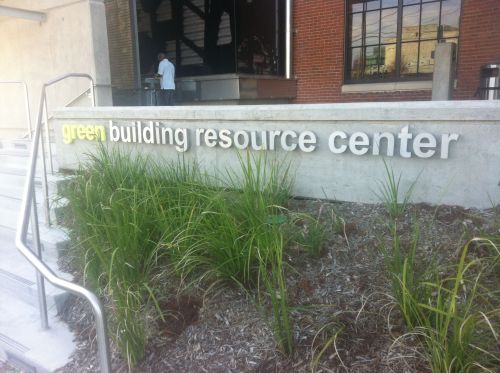Location: 1700 University Dr Fort Worth, TX 76107
Website: brit.org
Description: Established in 1987, the Botanical Research Institute of Texas (BRIT) is global botanical research institute and learned center based in Fort Worth’s Cultural District. In the Spring of 2011, the BRIT moved into a new 70,000 square-foot facility based on the campus of the Fort Worth Botanic Gardens. Designed by Hugh Hardy of H3 Hardy Collaboration Architecture, the building is certified LEED-NC Platinum by the USGBC.
Notes:
+ Beck Construction was contracted for materials sourcing, site development, and planning.
+ Facility was not merely designed to meet LEED specifications, but also the needs of the BRIT itself.
+ Sustainable features divided into four categories: site selection/characteristics, water efficiency, energy & atmosphere, and indoor environmental quality.
+ More than 76% of the developed site has been restored to a native ecosystem: North Texas prairie.
+ Green roof, more appropriately called a “living” roof, is carpeted with plants reduces heating/cooling needs and provides a habitat for native flora/fauna.
+ Indigenous/xeriscape landscaping drastically reduces water consumption.
+ Onsite retention pond stores stormwater runoff to be used for irrigation.
+ Rainwater catchment cistern collects runoff from the living room, also to be used for irrigation.
+ Geothermal wells used to regulate temperature throughout the facility and reduce energy costs.
+ Photovoltaic solar array on the herbarium provides 14% of the building’s energy needs.
+ Low-flow fixtures and other water efficiency measures reduce consumption by 60% over EPA standards.
+ Sustainably harvested or renewable materials, such as wool carpet and bamboo ceilings, were used whenever possible.
+ Recycled materials used for over 20% of BRIT’s building materials.
Conclusion: Since moving to Fort Worth, I have always had the desire to the explore the BRIT’s facilities, admittedly for its aesthetic qualities. Many of the LEED certified spaces I’ve had the opportunity to tour have been somewhat disappointing—apparently sacrificing form for function (or efficiency). Moreover, the occupants of the building are either less than appreciative of its sustainable features, or simply indifferent. In the case of the BRIT, it is clear that the organization’s involvement in the design process has resulted in long-term awareness and stewardship of the facility itself. Indeed, it seems the operational mission of the BRIT and the principles of sustainability have integrated seamlessly, aided by an appreciation for the built environment which it now inhabits.
 Sustainability Ticker
Sustainability Ticker- An error has occurred; the feed is probably down. Try again later.
Tag Cloud
acupuncture advocacy africa agriculture atmosphere bike business c2c city climate commerce commercial community commuting congestion culture cycling decay defense demonstration development drought dutch economy ecotax energy environment ethanol ethics eu farming food fuel green greenhouse hyperlocal ideology inflation infrastructure local military nanogenerators planning plants politics population progress renewal resources security skepticism solar somalia spring stewardship summer sustainability texas toronto transit transparency transportation uprising urbanism venlo warming waste wastewater water welfare well-being zoning









